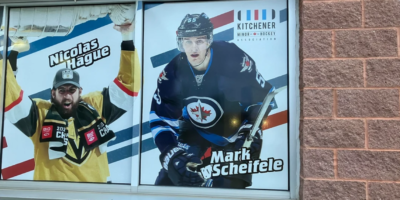The Canadian Hockey League (CHL) draft that took place last Wednesday was the last time that a European goaltender will be drafted to a team in the CHL. The league announced June 10 that goalies born in Europe would be ineligible for the entry draft starting in 2014, all goaltenders eligible for the draft in 2013 could still be selected and have the ability to play out the remainder of their eligible years in the league.
The CHL is comprised of three leagues: the Western Hockey League (WHL), the Quebec Major Junior Hockey League (QMJHL), and the Ontario Hockey League (OHL). The league gives players aged 16 to 20 from around the world an opportunity to develop their skills against other players the same age as them, and produces many of the players taken in the NHL entry draft. In fact, 13 out of every 18 players in the 2012 entry draft came from the three leagues. In North America, the league is something of a natural stepping stone in a young player’s development and the league also serves as an alternative for European born players who don’t want to jump straight from minor hockey into one of the men’s leagues that the region is famous for. However this is no longer an option for European goaltenders, since the CHL recently made a decision to ban the drafting of European goalies starting in 2014.
The new policy is intended to benefit both the North American goalie system as well as the European system. The CHL is hoping to give more opportunities to homegrown talent as opposed to bringing over teenage goaltenders from Europe to play in the league(s).
Since 2004 there have been 52 European goalies taken in the CHL draft; of those goalies just 11 of them have gone on to play in the NHL, three of which have gone on to become starting goaltenders (Jaroslav Halak, Michael Neuvirth and Ondrej Pavelec), none of whom have won a Stanley Cup or a Vezina Trophy. What does all of this mean? There seems to be evidence that while a number of European goaltenders are playing in the CHL, very few of them are going on to have successful professional careers in the NHL. Today’s best European goaltenders (Rask, Rinne, Backstrom, Vokoun, Varlamov, Hiller, Fasth) all stayed home and played in a men’s league until they were ready to come to the NHL. This indicates the CHL’s policy change may have little effect.
On a related note the NHL draft took place two Fridays ago, and it will be interesting to see how the changes to the CHL’s goalie policy will affect the goalie market in future drafts. Despite all of the free agent signing madness that went on last Friday, let’s not forget that teams were making trades on draft day as they jostled for positions in an attempt to secure the futures of their franchises. The Winnipeg Jets acquired Michael Frolik from the Chicago Blackhawks in exchange for a third and a fifth round pick. The Vancouver Canucks shocked much of the hockey world when they sent Cory Schneider to the New Jersey Devils for the ninth pick in the first round. The Toronto Maple Leafs acquired David Bolland from the Blackhawks for second and fourth round picks in 2013 and a fourth round pick in 2014. The San Jose Sharks traded a second round pick to the Penguins for Tyler Kennedy. The Islanders traded Nino Niederreiter to the Minnesota Wild in exchange for Cal Clutterbuck and a third round pick.
It will be interesting to see if the goaltending landscape in the NHL will be affected by this new policy that the CHL has out in place. As things stand right now, it appears that European countries will benefit from more of their goalies training and developing in their home nations and the North American goalies will benefit from the increase in opportunity to develop alongside premier talent in the CHL.




Leave a Reply